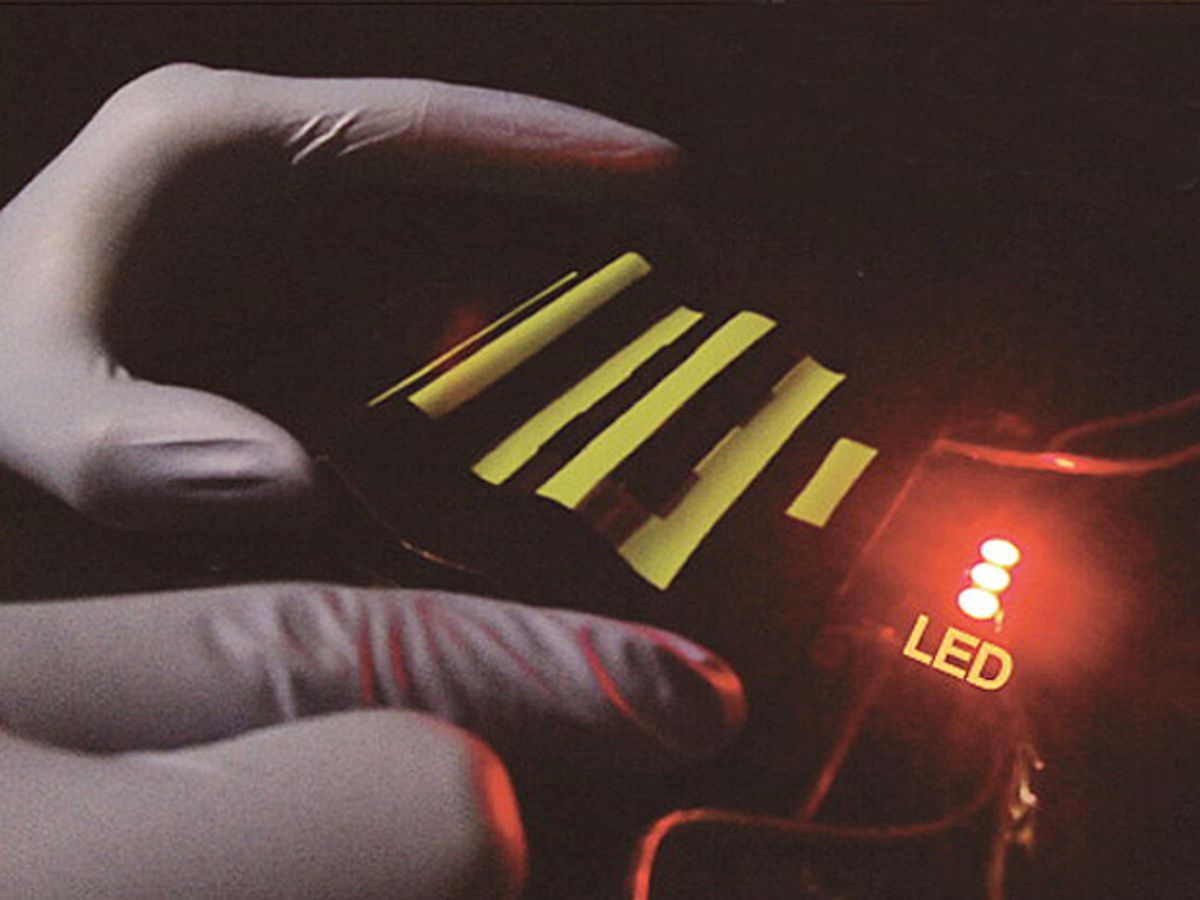The choices in wearable electronics, including Google Glass and a wave of smartwatches, are quickly multiplying. But those pesky batteries—they still need to be plugged into something to charge up. What if your watch strap could contain the battery components, along with a flexible solar cell? Voilà: No more plugging in.
Others have turned to piezoelectrics and nanomaterials to get wearable tech going, but a group at the Korea Advanced Institute of Science and Technology decided to work a lithium-ion battery right into the fabric.
"Although considerable progresses have been seen for wearable electronics, lithium rechargeable batteries, the power sources of the devices, do not keep pace with such progresses due to tenuous mechanical stabilities, causing them to remain as the limiting elements in the entire technology," wrote researchers led by Yong-Hee Lee in Nano Letters. To that end, they tested various materials which they enmeshed in the wristband.
They came up with a fabric-based battery comprising a nickel-coated polyester yarn as the current collector, polyurethane as a binder holding materials together, and a polyurethane separator. The resulting battery can withstand repeated folding and unfolding and still function, a requirement for any tech that's actually going to wrap around the wrist or be worn in other ways. The batteries exhibited "decent" cycling and rate performance, the researchers wrote. Just as importantly, they said, the methods for fabricating this type of battery already exist and should be scalable quickly.
To keep it charged, they added solar cells—flexible polymer cells (PCDTBT, specifically) on polyethylene naphthalate—to the same bits of fabric. The wristband solar panel achieved a conversion efficiency of 5.49 percent, not bad for flexible polymer cells of this type.
This is all pointing toward a future where your glasses, watch, shirt, and even the walls of your home are transformed by electronics. They'll be data nodes capable of medical monitoring, communications, or whatever else you can dream up. And they won't ever need to plug into a power source.
Dave Levitan is the science writer for FactCheck.org, where he investigates the false and misleading claims about science that U.S. politicians occasionally make.



